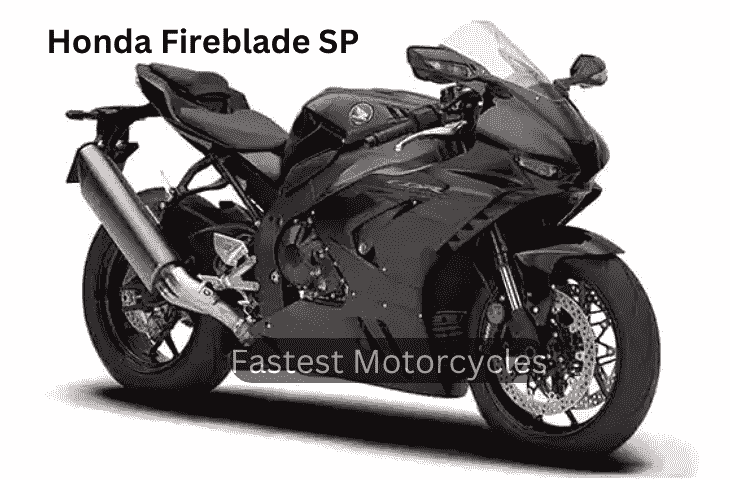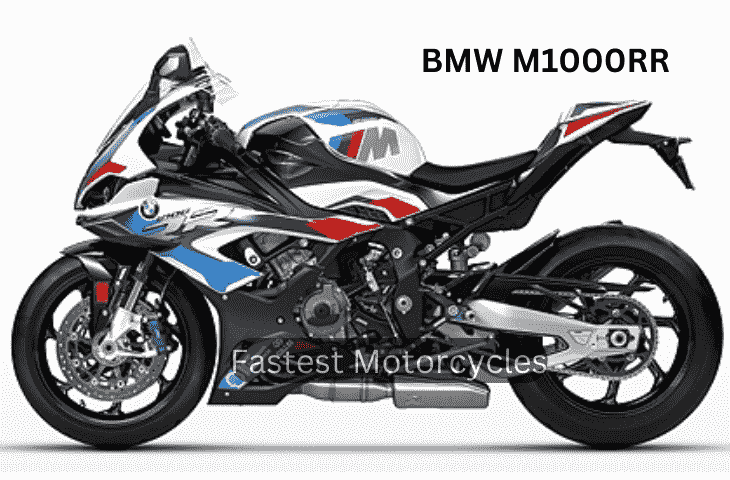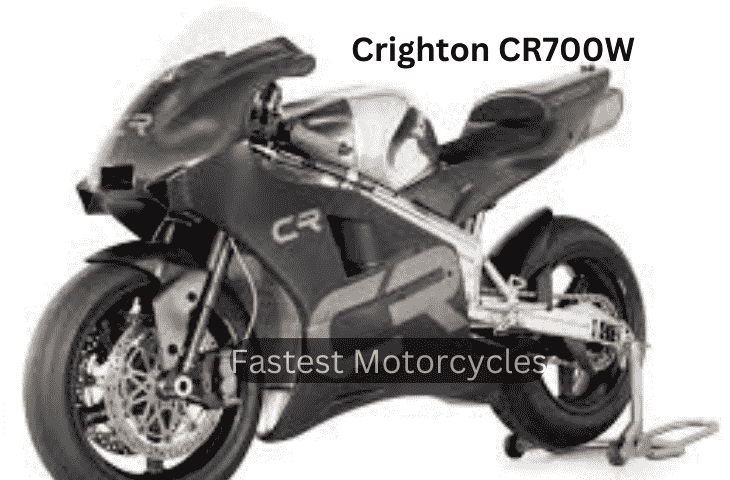Time marches on, and when it comes to speed, it advances rapidly. Since our last update at the end of 2022, the world of motorcycles has evolved once again. BMW has released an updated version of its exceptional homologation-spec S1000RR, the M1000RR. Similarly, Honda’s CBR1000RR-R Fireblade SP has seen exciting advancements with its new twin throttle bodies, thrilling us during testing. Additionally, the radical and powerful rotary Crighton CR700W has made its debut.
These developments bring up the ever-popular and hotly debated question: ‘What is the fastest production bike in the world?’ This topic remains one of the most contentious and complex to definitively answer. Manufacturers rarely disclose top speed figures, and independent media outlets seldom measure them, adding to the challenge of determining a clear winner.
So, what’s the fastest production bike in the world?
We must start with a crucial note: Since the Suzuki Hayabusa’s debut in 1999, the Japanese ‘Big Four’ motorcycle manufacturers have followed an informal ‘Gentlemen’s Agreement’ to limit their road bikes electronically to 300kph (186mph). Meanwhile, other brands like MV Agusta do not adhere to this. Consequently, top speed claims can be misleading and mostly irrelevant.
Therefore, our ‘fastest Top 10’ list is based on production road bikes with the highest power-to-weight ratios. This metric is the best available indicator of acceleration and, generally, ultimate speed.
While this method isn’t flawless or entirely conclusive, it provides a reasonable gauge. We rely on manufacturers’ claimed power figures, which should be viewed skeptically. Additionally, we use the manufacturers’ dry weight figures, as uniform wet weight data isn’t available. This approach is somewhat theoretical since motorcycles operate with fuel, oil, and water. The use of race kits and track pipes adds further complexity.
Despite these caveats and with a new generation of ‘hyperbikes’ emerging, we believe this list offers fascinating insights, reflects a fairly accurate speed hierarchy, and includes some unexpected entries.
Also Read:- Top 10 Most Followed Instagram Accounts 2024

Last time, we felt it was appropriate to include the rising new category of electric bikes, primarily because, as any rider will confirm, they offer unparalleled acceleration. The standout model is still the top-tier version of the Italian Energica Ego superbike. Having experienced it firsthand, I can attest that its 0-80 mph acceleration feels like a single-speed warp drive. Energica boasts a 0-60 mph time of just 2.6 seconds. However, that’s not the whole picture. Based on its power and weight specs, it doesn’t seem particularly remarkable; it’s the peak torque of 159 lb-ft that makes it impressive. Yet, it’s extremely heavy, its top speed is limited to 150 mph, and it costs nearly £30K. So, perhaps electric bikes still have some way to go.
- Claimed peak power: 171 bhp
- Estimated weight: 260 kg
- Power/weight: 0.656 bhp/kg
Also Read:- Top 10 Fastest Jets in the World 2024

Suzuki launched a completely revamped version of its legendary hyperbike, the GSX1300R Hayabusa, in 2021, and it was well worth the anticipation. Now compliant with Euro5 standards, it features an advanced set of rider electronics, a sleek new TFT dashboard, and significantly improved build quality. The new Hayabusa upholds the legacy of the 1999 original, which was renowned for its incredible speed that effectively ended the high-speed competition. While the latest model isn’t actually faster and, due to its weight, doesn’t quite compete with the newest superbikes, the acceleration and exhilarating speed it delivers remain as thrilling as ever. Check out our review of the Suzuki Hayabusa.
- Claimed peak power: 187.4 bhp
- Claimed dry weight: 221 kg
- Power-to-weight ratio: 0.874 bhp/kg

The notorious “Donington regime” Norton V4 RR is a thing of the past, now succeeded by the completely re-engineered V4 SV from the TVS-owned Norton, based in Solihull. While the new bike’s core specifications might not seem as impressive—offering 185bhp and a dry weight of 193kg compared to the previous model’s 200bhp and 179kg—it has addressed the over 30 faults reported in the original. The updated V4 SV performs like a true superbike in terms of acceleration, braking, and overall handling, even if it lags behind the top-tier models from Europe and Japan. Despite this, Norton touts their £44,000 flagship model as “the most luxurious British superbike ever created,” although it doesn’t claim the title of the fastest. For a detailed analysis, check out our Norton V4 SV review.
- Claimed peak power: 185 bhp
- Claimed dry weight: 193 kg
- Power-to-weight ratio: 0.958 bhp/kg
Also Read:- Top 10 Largest Economies In The World In 2024

MV Agusta, known for their Italian exotica, still offers the limited edition Rush, a carbon-fiber adorned roadster inspired by the Brutale 1000. With only 300 units available, this concept bike-styled machine is so unique and powerful that it deserves another mention. The MV Agusta Rush boasts a 998cc four-cylinder engine producing 208bhp, which can increase to 212bhp with the race kit. It has a dry weight of 186kg and a top speed exceeding 300kph (if you dare). Its eccentric design features include twin exhaust pipes and more. Check out our MV Agusta Rush review for detailed insights.
- Claimed peak power: 212 bhp
- Claimed dry weight: 186 kg
- Power/weight ratio: 1.140 bhp/kg

Honda’s flagship superbike has received another upgrade for 2024, aimed at enhancing its track performance. The latest model features new winglets, a revamped engine, a revised frame, and updated suspension and brakes, making it a significant advancement over the previous version. However, its peak power and weight remain largely unchanged, so its ranking stays the same. Determining the exact specifications is challenging since no official dry weight figures have been provided. Based on an estimated kerb weight of 201 kg and a 16-liter fuel tank weighing about 12 kg, the dry weight is approximated to be around 180 kg. Coupled with its 214.6 bhp output, this places it in the realm of the M1000RR. This makes sense, as this is the most powerful, extreme, and track-focused Fireblade to date, now further refined to excel in WSB, BSB, and possibly even the TT. Read our Honda Fireblade SP review here.
- Claimed peak power: 214.6 bhp
- Estimated dry weight: 180 kg
- Power/weight: 1.192 bhp/kg
Also Read:- Top 10 Biggest Cruise Ships in the World 2024

In 2021, BMW introduced the renowned ‘M’ performance designation to its Motorrad division, applying it to a special, finely-tuned, lightweight, aero-equipped, limited edition homologation model of the already impressive S1000RR superbike. By 2023, this model became even more extreme with enhanced aerodynamics through a new, wider fairing. For the average rider, as a foundational race bike from which a true superbike can be developed, aside from the aerodynamic improvements, it’s not significantly faster or superior to the already exceptional S1000RR. However, it represents the pinnacle of BMW’s current offerings, with a price tag exceeding £30K. Read our BMW M1000RR (2021) review here.
- Claimed peak power: 212 bhp
- Estimated dry weight: 175 kg
- Power/weight: 1.211 bhp/kg

Another impressive addition from our previous overview is the Aprilia RSV4 1000. It’s been a while since Aprilia’s groundbreaking, power-packed, compact, and tech-heavy original RSV4 1000 held its own in the world superbikes arena (it was first introduced in 2010, after all). In response, Aprilia upgraded it to an 1100cc version in 2019 by utilizing the larger engine from the 1100 Tuono. The bike saw further updates in 2021 with the addition of new semi-active electronic suspension, although its peak performance remained unchanged.
The result is a phenomenal machine, albeit not WSB-compliant. The engine is robust and delivers plenty of torque, the compact chassis offers excellent handling, and the advanced electronics and premium components are on par with the best in the industry. However, its compact size may not be ideal for larger riders. If it fits you, there are few sportbikes as exceptional on the road. For more details, check out our review of the Aprilia RSV4 Factory.
- Claimed peak power: 217 bhp
- Estimated dry weight: 177 kg
- Power/weight ratio: 1.226 bhp/kg
Also Read:- Top 10 Most Expensive Phones 2024:Luxury Mobile Collection

The WSB-homologation special edition (yet street-legal) version of Ducati’s impressive V4 superbike was introduced in 2019 and has seen continuous updates since then. This bike secured the World Superbike Championship with Alvaro Bautista in 2022 and did so again last year. In essence, it offers everything: tremendous power (increasing from the S’s 214 bhp to a substantial 237 bhp in race configuration) from the MotoGP-inspired V4 engine, a super-lightweight monocoque chassis, top-tier cycle components, cutting-edge aerodynamic aids, a wealth of exotic Italian design and visual appeal, and now a price tag exceeding £38K. Check out our review of the Ducati Panigale V4R here.
- Claimed peak power: 237 bhp
- Estimated dry weight: 172 kg
- Power-to-weight ratio: 1.378 bhp/kg

The previous champion, the astonishing £50,000 supercharged H2/R, has been dethroned by the ultra-light Crighton, but it’s a close race. Kawasaki’s goal was to create the world’s most powerful production machine, and that ambition still holds true today. In its track-only ‘R’ trim, the Kawasaki is said to deliver an impressive 306bhp, which can rise to 322bhp with the ram air effect. This, coupled with its lightweight tubular steel trellis chassis (though the dry weight of 193kg is an estimate based on its published wet weight of 216kg), is what keeps it near the top. There may be some debate about its road legality, as the road-legal H2 Carbon version, which produced 240bhp, is no longer available. However, the 200bhp Ninja H2 SX SE and Z H2 super naked are still in the running. Despite this, it remains one of the fastest production motorcycles globally. Check out our review of the Kawasaki H2 and H2R for more information.
- Stated maximum power: 322 bhp
- Estimated weight without fuel or fluids: 193 kg
- Power-to-weight ratio: 1.585 bhp/kg

The Crighton CR700W is a remarkable machine, albeit with some controversy surrounding its legality for road use and its limited production of just 25 units. However, since it is available for purchase and we have included the track-only H2 R in our list, we found it deserving of recognition. What cannot be disputed is its exceptional performance. Developed by rotary expert Brian Crighton, known for his work on the dominant Norton and Roton racers of the 1990s, this rotary-powered track bike exudes performance and speed. Its 690cc twin-rotor engine churns out an impressive 220bhp, making it the highest power-to-weight ratio production bike available.
Despite its outstanding performance, there are drawbacks. It is notoriously challenging to ride, has a lengthy 12-month delivery period due to being hand-built to order, and comes with a hefty price tag of 95,000 pounds. However, for those seeking the fastest and most extreme bike, this is the price to pay.
Cover up to Six Bikes on one Multi Bike insurance policy
The Crighton CR700W is a remarkable machine, albeit with some controversy surrounding its legality for road use and its limited production of just 25 units. However, since it is available for purchase and we have included the track-only H2 R in our list, we found it deserving of recognition. What cannot be disputed is its exceptional performance. Developed by rotary expert Brian Crighton, known for his work on the dominant Norton and Roton racers of the 1990s, this rotary-powered track bike exudes performance and speed. Its 690cc twin-rotor engine churns out an impressive 220bhp, making it the highest power-to-weight ratio production bike available.
Despite its outstanding performance, there are drawbacks. It is notoriously challenging to ride, has a lengthy 12-month delivery period due to being hand-built to order, and comes with a hefty price tag of 95,000 pounds. However, for those seeking the fastest and most extreme bike, this is the price to pay.


